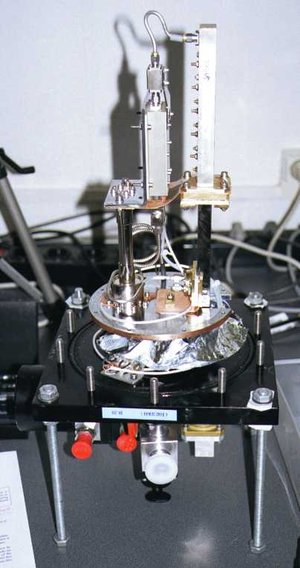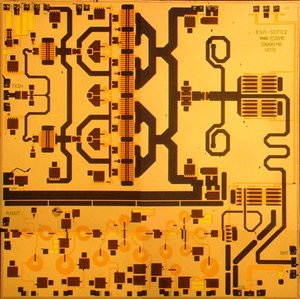

Seed-sized space chip
Thank you for liking
You have already liked this page, you can only like it once!
Smaller than a strawberry seed, this tiny signal amplifier was produced by the European Space Agency to fill a missing link in current technology, helping to make future radar-observing and telecommunications space missions feasible.
“This integrated circuit is a low noise amplifier, measuring just 1.8 by 0.9 mm across,” explains ESA microwave engineer David Cuadrado-Calle. “Delivering state of the art performance, the low noise amplifier’s task is to boost very faint signals to usable levels.”
It could in the future be employed for both radar-based missions – where the faint signals are the radar echoes received by the instrument after they bounce off Earth’s surface and travel back to the satellite – and telecommunications missions – where the communication signals coming from Earth are amplified by the satellite and sent back to Earth for broadband access or broadcasting services.
“The amplifier was designed by ESA’s Radio Frequency Equipment and Technology Section, and built in gallium nitride on silicon, rendering it much more robust against high input power signals than previous designs. The manufacturing of the chip was done at MACOM’s European Semiconductor Centre (formerly OMMIC) in France.”
Driving the circuit design were the needs of a proposed ESA mission, an Earth Explorer candidate called Wivern, to follow on from the current radar-based cloud-profiling EarthCARE mission undertaken by ESA with the Japan Aerospace Exploration Agency, JAXA.
Wivern – short for wind velocity radar nephoscope – would provide the first measurements of wind within clouds and precipitation while also delivering profiles of rain, snow and ice water to improve forecasts of hazardous weather and provide new insights into severe storms.
To achieve this Wivern would employ W-band radar signals. In practice this would involve transmitting thousands of watts of power, and the mission’s receive chain would have to withstand their leakage.
W-band also holds potential for future higher-frequency and higher-bandwidth satellite telecommunications.
David adds: “Producing this low noise amplifier was an exciting exercise for us because while such work is normally given to European industry or universities, in this instance, we knew exactly what we needed, and we had the skills to achieve it. Having this as an in-house project also gave us a chance to flex our chip design muscles.”
The low noise amplifier’s functionality was checked out at VTT Millilab, ESA’s external high-frequency laboratory, and was recently reported in the prestigious Institute of Electrical and Electronics Engineers (IEEE) Microwave and Wireless Technology Letters.
-
CREDIT
ESA-SJM Photography -
LICENCE
ESA Standard Licence

Estrack low-noise amplifier

6x6 mm GaN chip

Biomass instrument in action

Water drop antenna lens

